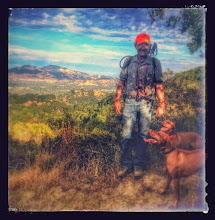Bailey forth place derby GSP Reno trial 2009
Bailey was 11 months old.
Vizsla breeders must have a goal.
Immediately the average sportsman-hunter with his good shooting dog will exclaim, “…then why fool around with field trials and breed for these wild-running, All-Age dogs?”
There are several reasons why field trials are essential in the development and protection of a hunting breed.
First, it is a sport unto itself, a source of enjoyment to those who participate (both man and dog), and it stimulates interest in bird dogs and bird dog training. But, much more important, field trials provide a means of comparing bird dogs in the field – thus giving proof (or disproof) to our breeding theories and practices.
The high-class, running field trial performer exemplifies desire, ambition and courage. He displays speed and stamina in covering the maximum amount of ground in a given time. He must show a natural intelligence in his ground pattern and his olfactory powers must be of high order or he would be unable to handle his game at this speed. Style and dash go hand in hand with conformation as does the ability to run fast with the least possible exertion.
True, these so-called “class” dogs are not at all times also ideal for all hunting excursions, but, to quote from W.F. Brown’s book FIELD TRIALS:
“There is a tendency toward average in any long-established breed, and outside of a very few individuals which inherit to a marked degree the intensified qualities of a prepotent sires, the majority of a dog’s get will grade down from high-class performer through all the intermediate grades to that of the rank duffer. The records of prepotent sires reveal the fact that they sired scores of ordinary shooting dogs to one really high-class performer. Consequently, what would be the ratio if we were to breed from individuals of ordinary quality; or, in other words, from such as are common consent considered “ideal shooting dogs” by the rank and file of American Sportsman?"
Bailey's 2nd place at NCVC walking trial (22 dog) open derby 2010 at 23 months old.
The next day Bailey takes first in Amateur Derby


![The Wonderful World of Sporting Dogs (What Is A Field Trial?) [VHS]](http://ws.amazon.com/widgets/q?MarketPlace=US&ServiceVersion=20070822&ID=AsinImage&WS=1&Format=_SL160_&ASIN=092264585X&tag=redbirddogavi-20)












No comments:
Post a Comment